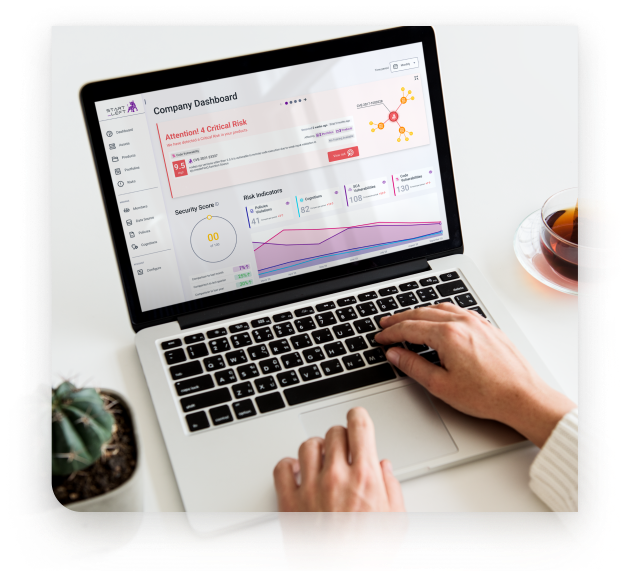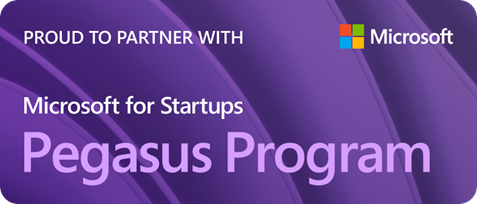Why SOC 2 and Outside-In Scoring (BitSight, RiskRecon...) Are No Longer Enough: Introducing Start Left® Inside-Out Scoring for Comprehensive Vendor Risk Management
For years, outside-in risk scoring tools like BitSight, RiskRecon, SecurityScorecard, and Black Kite have dominated the Vendor Risk Management (VRM) and Third-Party Risk Management (TPRM) landscape. These solutions provide a valuable but incomplete perspective on a company’s security posture.

In today's increasingly interconnected digital landscape, CISOs, CTOs, CROs, and CEOs at software companies are under mounting pressure. Not only are they expected to build secure, high-quality products, but now they must prove it to an expanding ecosystem of partners, customers, and regulators.
But the industry is evolving, and procurement teams are now demanding more than these outside-in snapshots. They want continuous, inside-out scoring that goes beyond the external view of vulnerabilities and compliance. Here’s where Start Left® Security changes the game.
Why You Need Inside-Out Scoring—Right Now
While outside-in scoring tools like BitSight or SecurityScorecard provide a useful external evaluation, they don’t offer visibility into what’s happening inside your organization or products. These ratings, based on observed vulnerabilities and external data, fail to measure how effectively your teams are handling security from within, throughout the entire software development lifecycle (SDLC).
Procurement teams are updating their Vendor Risk Management (VRM) and Third-Party Risk Management (TPRM) programs to include inside-out scoring from platforms like Start Left®. This means that software vendors and companies must not only validate their external scores but also demonstrate how they are managing internal security risks in real-time.
The Key Differences: Inside-Out Scoring vs. Outside-In Scoring
Here’s how Start Left®’s Inside-Out Scoring complements and elevates the outside-in ratings:
1. Comprehensive Risk Scoring:
- Outside-In: Based on external factors like vulnerabilities that can be detected from the outside (e.g., open ports, exposed services).
- Inside-Out (Start Left®): Risk scoring based on internal security metrics including how effectively vulnerabilities are identified, prioritized, and mitigated by product teams. This means a true understanding of risk, not just what is visible from outside your network.
2. Continuous Monitoring:
- Outside-In: Offers a periodic snapshot of a company's security posture but lacks real-time, in-depth monitoring.
- Inside-Out (Start Left®): Delivers continuous, real-time monitoring of both application security and cloud security across the entire product lifecycle. This ensures you’re not just reacting to new threats, but actively managing them.
3. Product-Centric Focus:
- Outside-In: Doesn’t provide detailed insights into how individual product teams are managing security risks.
- Inside-Out (Start Left®): Provides product-centric analytics, allowing security teams and developers to focus on the most critical issues, whether they involve sensitive data (e.g., PII or PHI) or high-priority vulnerabilities (exploitability and reachability).
4. Holistic Security Validation:
- Outside-In: Can only show part of the picture, potentially leading to false confidence in security.
- Inside-Out (Start Left®): Combine outside-in and inside-out perspectives for a complete and holistic view of security risks, ensuring that your products and teams are truly secure, not just compliant.
Why You Should Be on the Start Left® Platform
Start Left® offers more than just vulnerability detection; it is a program that transforms your entire security posture management strategy into a strategic business advantage.
Key Value Propositions for Internal Secure Product Operations:
- Reduced Tool Overload: Start Left® integrates security seamlessly into existing workflows, eliminating the need for teams to juggle multiple, disconnected tools.
- Increased Developer Efficiency: Automated prioritization of vulnerabilities based on business impact ensures your teams are working on what matters most.
- Product Performance Analytics: Start Left® tracks the performance of each team, making it clear who’s excelling and where improvements are needed.
- SLAs and Compliance: Leverage NIST best practices and real-time security metrics to stay ahead of compliance requirements.
Key Value Propositions for Business Outcomes:
- Faster Sales: By improving your inside-out security scores, Start Left® helps you move through procurement processes faster. Vendors with higher security performance scores inspire greater customer trust and reduce procurement friction, leading to faster contract negotiations.
- Better Customer Experiences: When you can demonstrate not just compliance but true security through Start Left®’s continuous security monitoring, customers have more confidence in your products, leading to stronger customer relationships.
- Improved Customer Trust: In an era where trust is paramount, being able to show that your organization actively manages risks—not just ticks off compliance boxes—builds deeper trust with partners and customers.
- Ecosystem Leadership: Validated Secured Vendors: By combining inside-out scoring with outside-in assessments, your organization will stand out as a leader in security. This positions you in a growing ecosystem of “validated secured vendors,” enhancing your reputation in the marketplace.
The Inflection Point: Why This Shift Is Happening Now
Compliance alone is no longer enough. While SOC 2 certification and outside-in scoring from BitSight, SecurityScorecard, and RiskRecon have provided some assurance, the growing complexity of software development, cloud infrastructures, and third-party dependencies requires continuous security validation. Procurement teams are waking up to the fact that snapshots are insufficient—they need continuous, real-time visibility into their vendor’s internal security posture.
Start Left® offers the tools to get you there, providing continuous program performance visibility and empowering teams to build secure products from the start.
Ready to Future-Proof Your Security?
It’s time to level up. Don’t wait for the next breach or regulatory change to catch you off guard. Start Left® Security ensures that your organization is not only compliant but also proactively secure, giving you the edge in an increasingly competitive and risk-laden environment.
SHARE!
More Resources















